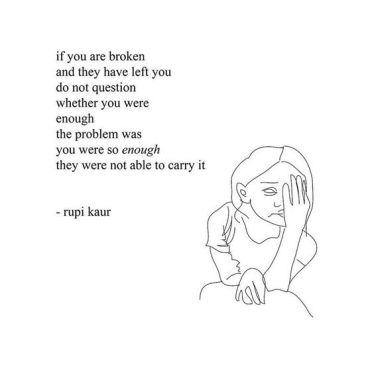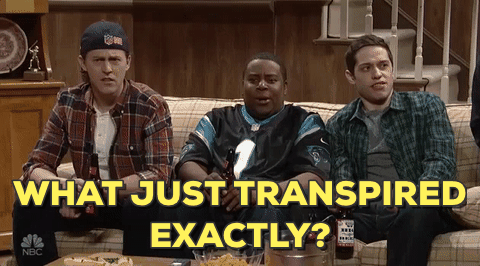In reading Rupi Kaur’s Milk and Honey, I have come to find that intertextual codes manifest themselves differently in a collection of poetry as opposed to more story-driven works of narrative fiction. That is, the dynamics that allow a writer to employ these intertextual codes in a typical work of fiction are altered when approaching a book of poetry. For this collection specifically, the “events” of the book are not concrete moments in time that the reader can observe. The poems in this book are separated into four sections, each featuring poems that have to do with that specific topic — namely, the hurting, the loving, the breaking, and the healing.

Kaur’s poems largely aim to portray or evaluate specific feelings, rather than focusing on individual events or moments. These poems have quite clearly been written as reactions to various events that have occurred in the author’s life, though the specifics surrounding these events are never discussed. This leaves the reader curious as to what has happened, forcing him or her to partially construct these events only from that which is specifically provided by Kaur within the poems. These instances are not compiled chronologically, thus the reader is incapable of using their juxtaposition to uncover the causal sequence therein. This means that someone attempting to read this book of poetry may find themselves incapable of evaluating the text through either the Hermeneutic or Proarietic codes, due to the nature of how the book is structured.

However, this collection of poetry from Kaur does still play heavily with codes, both symbolic and cultural. As mentioned in Blog 1, Melanie discusses controlling values, the concept of femininity, and the role that female empowerment plays in the book. Additionally, I believe that cultural codes play a vital role in framing the purpose for this collection of poetry. As we have read in chapter six of “The Subject of Semiotics” by Silverman, “[t]he cultural codes, which are extremely numerous and heterogenous, to a very large degree subsume all other categories. They speak the familiar “truths” of the existing cultural order…” (Silverman 242). One concept along these lines that I found to be both especially compelling and readily apparent in this book is the connection between females and the idea of being broken. This plays heavily into a cultural code we all must contend with, namely the idea that men are masculine and whole, while women are not only fragile, but incapable of being whole without a man. Though these gender roles may seem outdated, their impact becomes readily apparent in the section “the breaking” as Kaur reflects on her heartbreak and resulting mental state. Multiple times throughout this section, Kaur expands upon the concepts of falling apart, being empty, and being broken.
I had to leave
I was tired of
allowing you to
make me feel
anything less
than whole
These concepts of fragility and emptiness lend themselves again to our cultural understanding of femininity, and stem from the fact that we live in a society that impresses upon its young girls and women the idea that they are less than whole, and will not be happy until they have found a man. In terms of this book specifically, this cultural code exists as a sort of soil from which these poems manifest themselves. And as a result, much of the heartbreak and pain expressed in these poems stems directly from Kaur’s opposition to this cultural code, and its role in the network of controlling values at play.

I’m intrigued by your last paragraph. You say that Kaur opposes the controlling value of needing a man to be “whole”/ a man “completing her”, but I think it’s the opposite. I think she takes us through the process of her submission to this value. she believes what society has told her, she has this man in her life who she loves so deeply that it consumes her and she loses herself in him. But then she gets hurt and heartbroken, and when he leaves her, she is absolutely destroyed. She continues to submit to this controlling value with multiple relationships, only to get the same results. Finally, she’s had enough. She opposes the controlling value. In “the healing,” she relies only on herself, and finds her wholeness within herself, not within a man or a relationship. That’s when she defies the cultural code that society tried to force her into.
LikeLike
I found the idea of the poems were written as a reaction to something to be quite interesting and was not something that I had taken into consideration before. Even though you mentioned in your post that basically the only structure that was present was the division of the four different chapters, I still felt that there was a concrete set of events that took place during the book in a sequence much resembling a plot. This comes from the fact that many of the poems do not make a lot of sense outside of the narrative and are unable to stand alone as a single poem. I do admit that many of the events are left to the projection of the reader, as you mentioned in your post. In addition, I do agree with the comment that Maddie made about the controlling value. The author does not so much oppose the controlling value of “the idea that men are masculine and whole, while women are not only fragile, but incapable of being whole without a man,” as you mentioned, but more over the fact that the author submitted to this idea and is narrating her own personal experiences.
LikeLike
I agree with the two comments above. I think the best way to look in on a subject is by being in the shoes of the subject. The author is clearly showing some kind of past hurt and is making this her controlling value so that we the readers can assume a role to understand how she feels and not judge. No black or white judgement, just a lot of grey, which is real life.
LikeLike